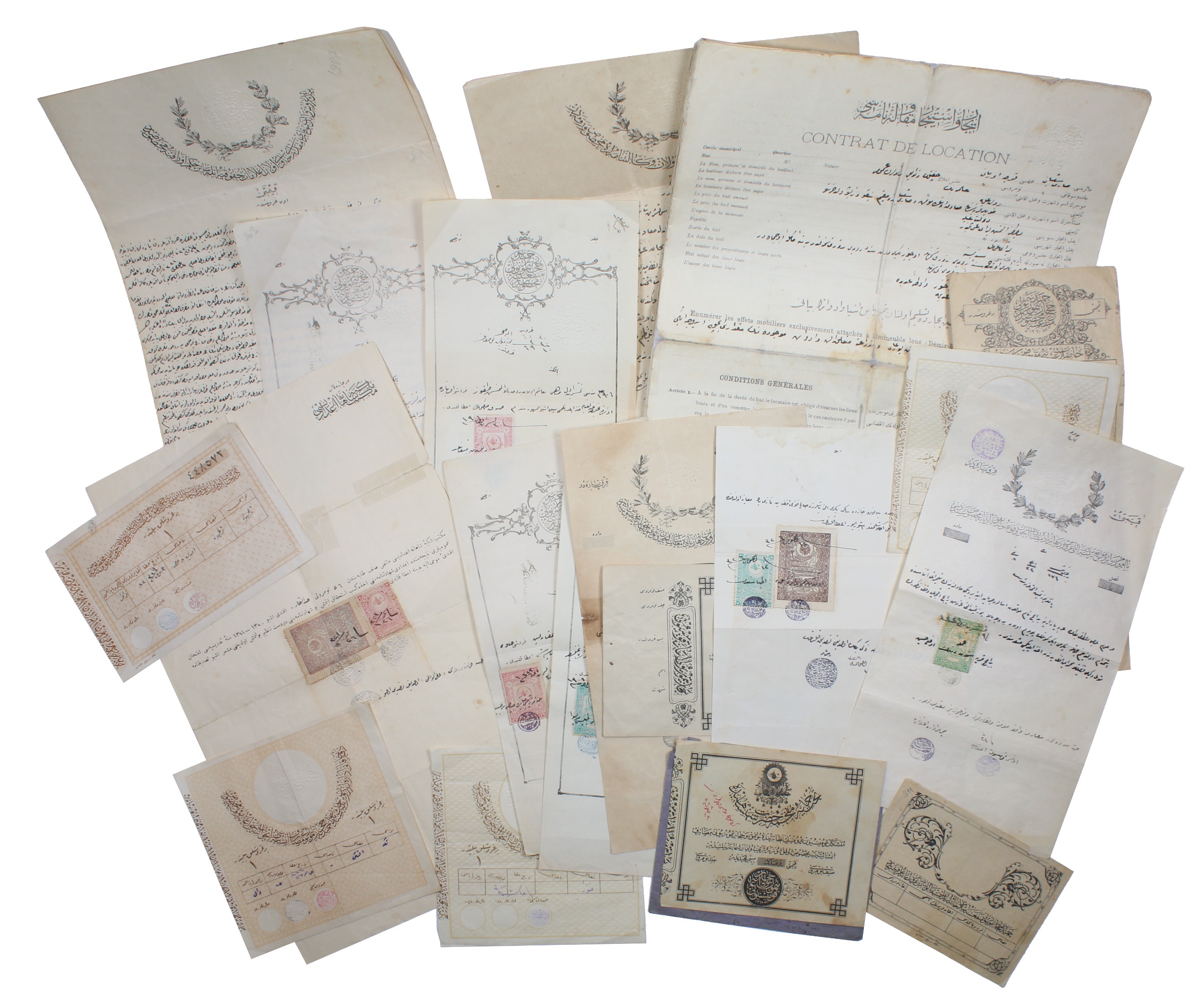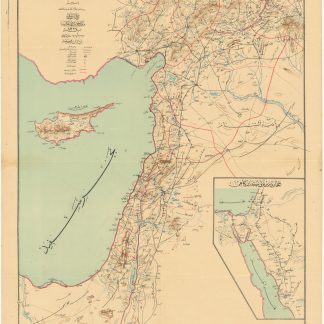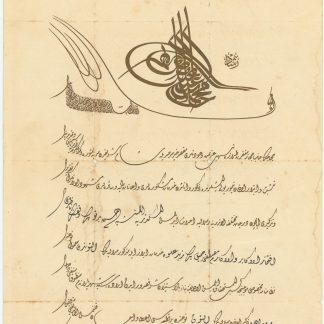Collection of Hejaz Railway revenue stamps, donation receipts and other related ephemera.
8vo, 4to and folio. 21 items, comprising a total of 33 printed or written pages. With 33 revenue stamps altogether (not all issued on behalf of the Hejaz Railway). Includes one original envelope.
Comprises a range of official documents on Hejaz Railway revenue forms or validated with Hejaz Railway revenue stamps, including a form for the collection of Ashar tithes (1904/1905); a civil service school graduation certificate for Abdülkadir Efendi (1905); a property evaluation document (1906); a medical report (1910); and a power of attorney (1919). Further comprises: 7 Hejaz Railway donation receipts (5 dated 1902-1911, one illegible, one blank); 4 salary receipts on Hejaz Railway revenue forms (1906-1907); 2 promissory notes for payment on Hejaz Railway revenue forms (1910-1913); and 3 lease contract forms (1907-1909). Revenue values range from 40 Para to 10 Kurush, with one receipt in the value of a silver Medjidie.
The Hejaz Railway was not only a monumental feat of engineering, made possible by the collaboration of Turkish, German, Italian, French, Austrian, Belgian and Greek manpower and technical ingenuity, but also an immensely costly project that severely taxed the resources of the late Ottoman Empire. To collect the funds necessary for the realisation of the railway line that was to connect Damascus (and thus Constantinople and, by extension, the rest of Europe) with the Hejaz and the Holy Cities, the state's financial administration was almost entirely put into the service of the Railway's construction. The massive funding campaign not only called for contributions by the faithful, for which they were rewarded with donation receipts such as those at hand, but the treasury also levied special fees in the form of revenue stamps (some bearing miniature illustrations of the train) or official forms to be used for purposes so diverse as the collection of peasant tithes and the issuance of school graduation certificates. A few late examples in this collection give evidence that these forms continued to be used after the completion of the line in 1910 and, indeed, until the end of the Ottoman Empire.
Occasional edge flaws and small tears, but well preserved on the whole. A fine collection of these much sought-after ephemera.





